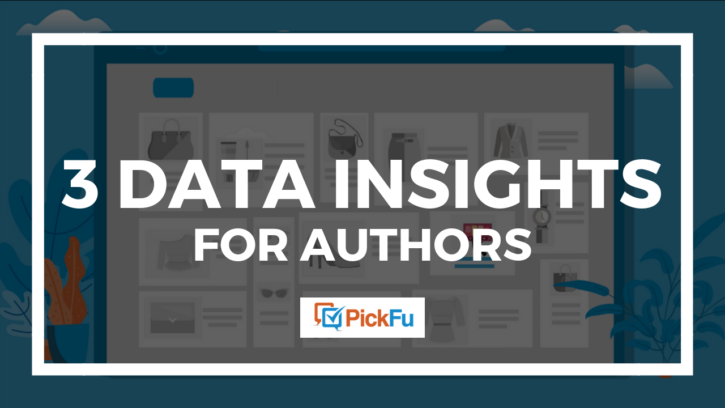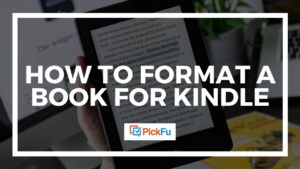Editor’s Note: Thanks to Caleb Kaiser at Reedsy.com for contributing the following guest post.
The publishing world earned its reputation for being opaque. If you want even basic data points, like book sales for a given title, you’re forced to cobble together numbers from a variety of sources — Nielsen BookScan, Amazon rankings, etc — just to get a vague estimate.
This dearth of data is part of what makes PickFu valuable to authors. PickFu gives you a quantifiable way to approach decisions like picking a cover image, writing a book description, or settling on a title based on data.
If you’re an author interested in taking a more analytical approach to your writing and/or publishing, you should know a handful of insights. We’ve listed our top three below, starting with…
Every niche has an ideal word count
An interesting but often neglected data point for authors is ideal book length. Artistic sensibilities might dictate that a story should take as long as is necessary, but book sales disagree.
For example, between the Kindle Fire’s debut in 2011 and 2017, the average nonfiction New York Times bestseller became 42% shorter, clocking in at 273 eBook pages (or 68,250 words, assuming the standard 250-word pages of most digital readers).
Fiction, on the other hand, has a different ideal length for each niche. A recent survey of editors on how many words a novel should be turned up these results:
- Commercial and literary novels: 80,000 – 100,000
- Science fiction and fantasy: 100,000 – 115,000
- Young adult: 55,000 – 70,000
- Middle grade: 20,000 – 55,000
- Romance: 80,000 – 100,000
- Mystery: 75,000 – 100,000
- Thriller: 90,000 – 100,000
- Memoir: 80,000 – 90,000
- Western: 45,000 – 75,000
There will always be outliers, but for the most part, these numbers are goalposts that the highest selling books tend to fall between.
Cover design is as much science as art
Some authors have a cover design in mind before they start writing. Some authors don’t even think about their cover until their publishing deadline. Either way, before you put together your prospective cover images, keep the following data points in mind:
- According to this guide to book cover design, Amazon suggests an ideal size of 2,560 x 1,600 pixels for your book cover image.
- Nearly 80% of readers report that a book’s cover is a “decisive” factor in their purchasing decision.
- When it comes to images used in covers, 58% of readers are bothered by cliched images, which the survey describes as, “Hooded figures wielding swords on fantasy novels; bare-chested half-faced dudes on romance covers; chicks in stilettos, tight pants, and tattoos on UF covers.”
If you’re outsourcing your cover design, this shouldn’t be a problem—a good designer won’t use cliche images or size a cover incorrectly—but these are still good data points to have in the back of your head as you evaluate your designers work or put together your own cover.
Keep industry standards in mind while book formatting
Not many authors are also graphic designers. Fortunately, new software like the Reedsy Book Editor will enable you to format your book for free.
Whatever software or designer you use to format your book, you need to know the industry standards for book formatting—in particular, trim size. Your book’s trim size refers to the final size of your pages after they’ve been “trimmed” to uniformity.
With eBooks, you don’t have to worry about trim sizings, as the digital reader takes care of that. With your book’s print copies, however, you’ll need to make some decisions. The industry standards are as follows:
- Pocket – 4.25 x 6.87 in (10.80 x 17.45 cm)
- Reedsy – 5 x 8 in (12.7 x 20.32 cm)
- Digest – 5.5 x 8.5 in (13.97 x 21.59 cm)
- Trade – 6 x 9 in (15.24 x 22.86 cm)
For the best insights, test with PickFu
Did you know Tim Ferris’s mega-bestseller The Four Hour Workweek was originally titled Drug Dealing For Fun and Profit?
There’s no general data available that would have told him that The Four Hour Workweek was a fantastic title. Instead, he ran tests of six prospective titles to find which one resonated best with his audience.
Knowing general goalposts, like the ideal book length or cover size, is a fantastic start to writing a bestseller. Insights taken by surveying your audience, however, are personalized to you and are the most valuable asset you can have.
Learn more about using data to sell more books with our free Reedsy course, How to Use Testing as a Self-Published Author.



